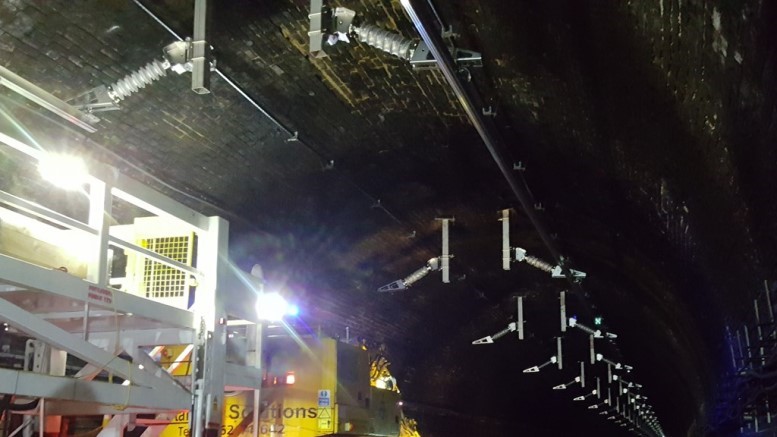

The installation of aluminium contact wires through the Severn Tunnel to prevent the corrosion that delayed the project by three years already. The infrastructure manager Network Rail has disclosed that this system has been used in Britain for the first time.

The 134 years old tunnel with a stretch of 6.4 km tunnel’s electrification was launched as a part of the Great Western electrification programme in June 2010. The tunnel runs 60 metres beneath the Severn Estuary.
Dr Dave Hewings, NR special projects manager said: “Several systems were considered for the tunnel, before an overhead rigid conductor rail system developed by Furrer and Frey, Switzerland, was selected. The system has already been used in many major tunnels in Europe, including the Gotthard Base Tunnel and the Ceneri Base Tunnel in Switzerland.”
The 25kV ac system, which uses 1400 aluminium structures bolted to the tunnel roof to carry a copper contact wire, was installed during a six-week closure of the tunnel in 2016. However, an inspection of the system a year later revealed that accelerated corrosion was occurring
The tunnel is unique due to its age and location that is open to an estuary environment. Around 63 million litres of water are pumped out of the tunnel by the Sudbrook pumping station daily to prevent flooding. The tunnel also features numerous shafts and connections, which further complicate the environment.
Hewing said: “There were always known challenges in Severn Tunnel, in terms of metalwork and corrosion, but it was developed with the same approach that was used in other tunnels. One of the challenges with any overhead line system is that of dissimilar metals and the prospect of electrolytic corrosion, where two similar metals come together in a conducive environment which causes the damage of one from the other.”
“It hasn’t been a problem with any of the installations in the other systems. But it appeared that the particular environment of Severn Tunnel, clearly linked to the salt air and the damp environment, contributed to accelerated corrosion.”
Hewings also added: “This raised two prospects: removing the system entirely, or removing the dissimilar metals. As the first option was extremely prohibitive in terms of cost, it was decided to pursue the second option of using aluminium contact wire for the first time in Britain.
Responses








